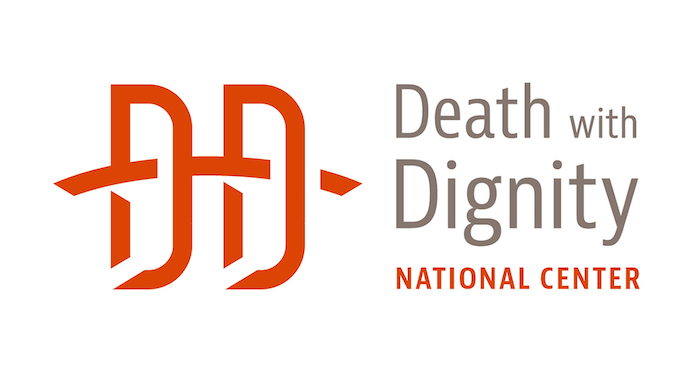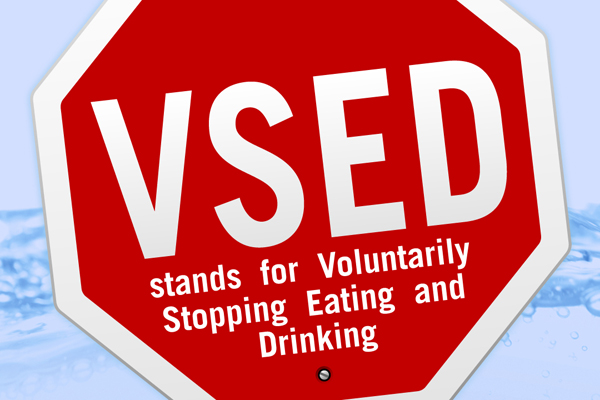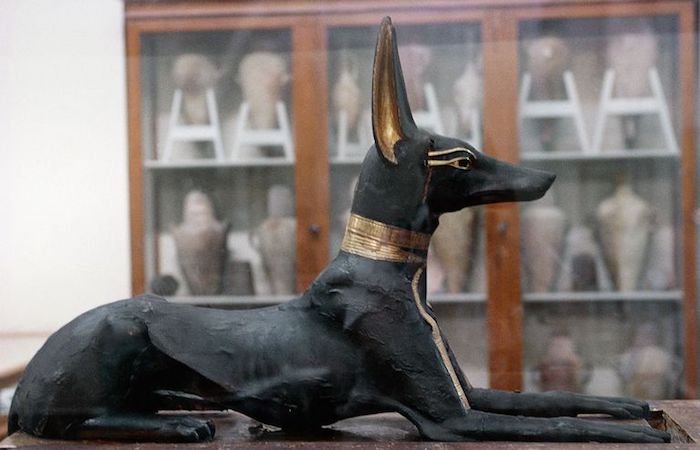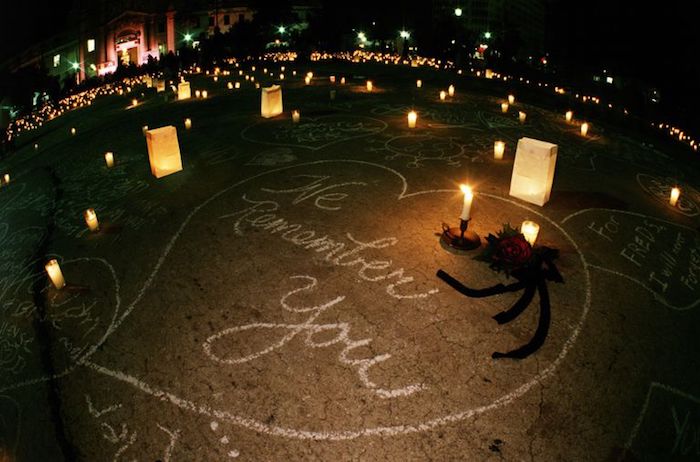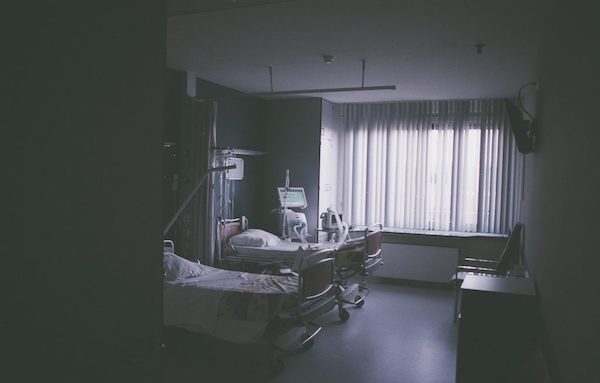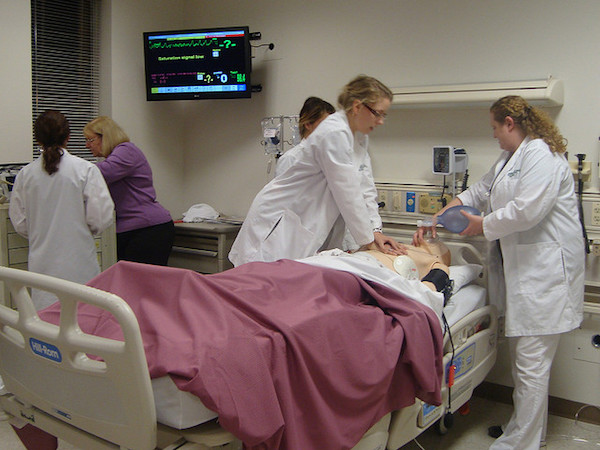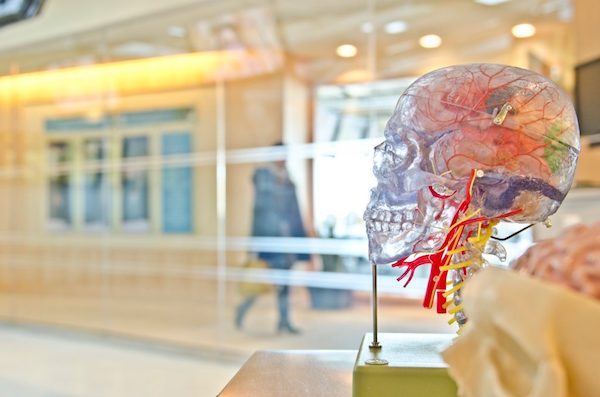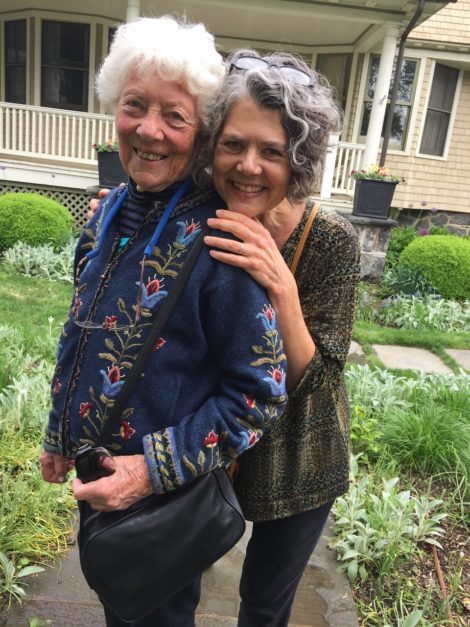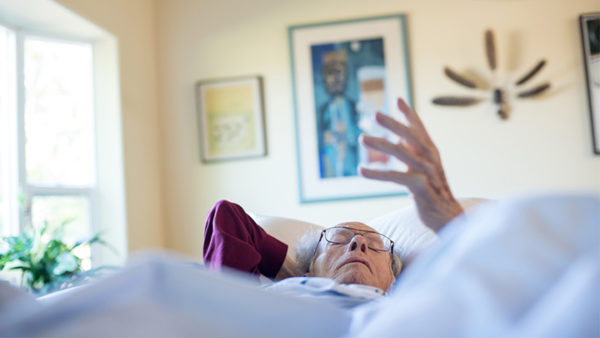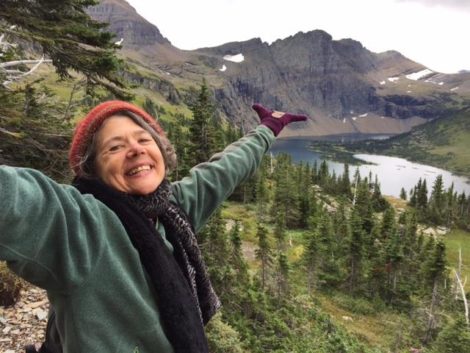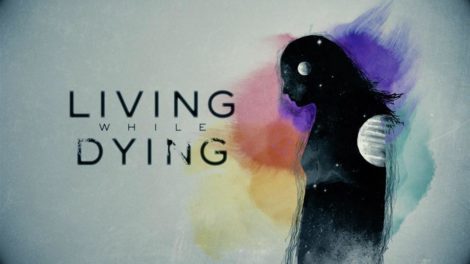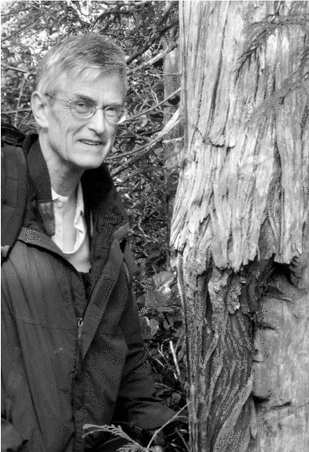Voluntary Stopping of Eating and Drinking (VSED)
To voluntarily stop eating and drinking means to refuse all food and liquids, including those taken through a feeding tube, with the understanding that doing so will hasten death. This is an option for people with terminal or life-limiting diseases who feel that with VSED their dying will not be prolonged. One of the advantages of this decision is that you may change your mind at any time and resume eating and drinking.
The US Supreme Court has affirmed the right of a competent individual to refuse medical therapies and this includes food and fluids. This choice is also commonly accepted in the medical community.
Before You Start
You must prepare to voluntarily stop eating and drinking. It’s not something that can or should be started the day it is first discussed.
- Talk with your physician to let them know of your plans. Talk with your physician about all your medications, and ask if a sedative or pain medication will be available to keep you comfortable.
- Complete an Advance Directive stating in writing that voluntarily stopping eating and drinking is your wish. Have your physician sign orders to withhold life-sustaining therapies and all resuscitation efforts.
- Talk with friends and family members who might care for you during this process early about your wishes and why you may want to take this course. Their support is crucial. However, beware that for many people families are often opposed to VSED and can pose a barrier.
- Finalize your business and financial affairs, make funeral and memorial plans, and gather your family members to share memories and say your good-byes.
- If you reside in a care facility, discuss your wishes with the staff and nursing director. You will need the staff to provide support and assistance.
- If you are already receiving hospice care, your team can help you prepare. If you are not on hospice, ask your physician for a referral to a local hospice provider. Usually hospice will provide supportive care once you start the process.
- If your illness is not one that is likely to cause death within six months, arrange for a psychological evaluation for depression and decision-making capacity by a mental health provider. This will reassure family, physicians, and others that your mental status is sound and this decision well considered.
Process
You can live for a long time without eating, but dehydration (lack of fluids) speeds up the dying process. Dying from dehydration is generally not uncomfortable once the initial feelings of thirst subside. If you stop eating and drinking, death can occur as early as a few days, though for most people, approximately ten days is the norm. In rare instances, the process can take as long as several weeks. It depends on your age, illness, and nutritional status.
At first, you will feel the same as you did before starting VSED. After a few days your energy levels will decrease and you will become less mentally alert and more sleepy. Most people begin to go in and out of consciousness by the third day and later become unarousable. Hunger pangs and thirst may occur the first day, but these sensations are usually tolerable; discomfort can be alleviated with mild sedatives or other techniques such as mouth swabs, lip balm and cool water rinses.
Since dehydration will most likely be the cause of death, it is important not to drink anything once you start. Even sips of water may prolong the dying process.
I wish I could say [my father] died a gentle death. But I’m not so sure. I wish doctor-assisted death had been available to my father. I believe it is what he would have wanted.
We recommend that all medications be stopped except for those for pain or other discomfort. Stopping medications for heart problems or diabetes, for example, may speed up the process.
Finally, one of the advantages of VSED is that you may change your mind at any time and resume eating and drinking.
People who begin this process often express a sense of peace that they can finally “stop fighting.” Some people describe a sense of euphoria or pleasant lightheadedness. There is an analgesic effect caused by dehydration that may explain this response. With dehydration, people often need less pain medication, urinate less, have less vomiting, and breathe more easily due to decreased congestion.
Resources
- Read this story, in which Christopher Stookey recounts his father’s death by voluntarily stopping eating and drinking.
- Browse peer-reviewed, academic-journal articles on the subject.
- Watch this video, in which Phyllis Shacter describes her husband’s dying after he decided to voluntarily stop eating and drinking:
Note: With the exception of quotes, information in the following sections has been adopted from End of Life Washington.
Not Starting, or Stopping Treatment
For some terminally ill people, aggressive medical treatment may not be helpful and may prolong the dying process without improving quality of life. Under certain circumstances, treatments can increase suffering, ruin the remaining quality of life, or even shorten life.
Stopping treatment can result in a peaceful death but it may also result in increased discomfort. Consult with your physician and arrange for optimal palliative (comfort) care before stopping treatment.
Stopping treatment can be combined with hospice and palliative care or voluntary stopping eating and drinking to shorten the dying process and reduce suffering.
Palliative Sedation
For dying people experiencing so much pain or unmanageable symptoms that they cannot get relief from medications unless the dose is high enough to make them unconscious, palliative sedation provides enough medication to keep them continuously unconscious and thereby free of pain and symptoms. All nutrition and hydration is stopped, and they usually die within a few days.
People using palliative sedation should be monitored around the clock to be sure the sedation is adequate. While this intensive monitoring can sometimes be provided in the home, it is usually provided in a skilled nursing or inpatient hospice facility.
Many [people] claim that palliative sedation effectively eases the suffering of patients when other means fail to do so. However, it is an unacceptable option for most terminally ill adults whose primary concerns are losing autonomy, quality of life and their dignity.
While palliative sedation is an ethical and legal end-of-life option, it is not necessarily a right. While you can request palliative sedation, it is up to the medical provider to determine if it is appropriate. Some physicians and hospices are reluctant or unwilling to authorize palliative sedation. If having the option of palliative sedation is important to you, discuss it with your hospice or other medical provider well before it becomes necessary.
Complete Article ↪HERE↩!

